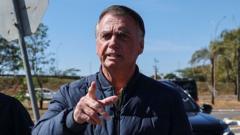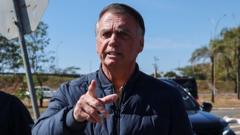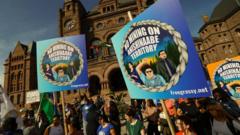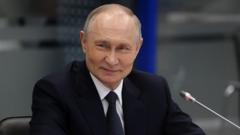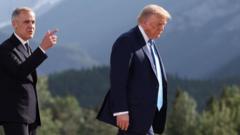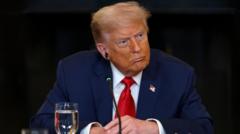As election day approaches, Canada witnesses an unprecedented voter engagement that reflects public sentiment amid political and economic challenges.
**Record Early Voter Turnout Marks Canadian Election Fever**
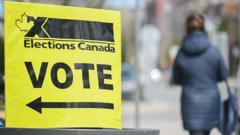
**Record Early Voter Turnout Marks Canadian Election Fever**
Early polling excitement surges as over 7 million Canadians participate ahead of the federal election.
More than 7 million Canadians have exercised their right to vote early, smashing previous records, according to Elections Canada. The surge in early voting included a notable turnout of approximately 2 million people last Friday alone, with polling stations open throughout the Easter long weekend. With just under a week remaining until the election on April 28, federal leaders are ramping up their campaigns as voters prepare to make crucial decisions about the future administration amidst an ongoing trade conflict with the United States.
Elections Canada reports that this year, early voting saw a 25% increase compared to the last federal election in 2021, representing about a quarter of eligible voters. Additionally, mail-in ballots also saw a rise, with over 754,000 received compared to 660,000 in the previous election cycle. Current polls indicate that the ruling Liberal party holds a narrow 5-point lead over the Conservative party, as both factions push hard for votes in the final stretch.
Liberal leader Mark Carney, a former central banker, has been vocal in positioning his party as the most effective defense against the economic pressures posed by US President Donald Trump, highlighting tariff issues and trade agreements. “Pierre Poilievre has no plan to stand up to President Trump,” Carney claimed during rallies held in Quebec and Prince Edward Island.
The Conservative leader, Poilievre, is capitalizing on a growing desire for change among voters, highlighting concerns related to housing, crime, and living costs that have festered under the long-term administration of the Liberals, led by former Prime Minister Justin Trudeau. “It's time for the government to start pinching pennies,” he asserted while unveiling his party's new platform.
In this dynamic election landscape, the Bloc Quebecois appears to be securing a third-place position, with the New Democratic Party trailing closely behind. This election, unfolding in the backdrop of significant economic challenges and rising tensions with the US, could redefine the future political landscape of Canada and its relationship with its southern neighbor.
Elections Canada reports that this year, early voting saw a 25% increase compared to the last federal election in 2021, representing about a quarter of eligible voters. Additionally, mail-in ballots also saw a rise, with over 754,000 received compared to 660,000 in the previous election cycle. Current polls indicate that the ruling Liberal party holds a narrow 5-point lead over the Conservative party, as both factions push hard for votes in the final stretch.
Liberal leader Mark Carney, a former central banker, has been vocal in positioning his party as the most effective defense against the economic pressures posed by US President Donald Trump, highlighting tariff issues and trade agreements. “Pierre Poilievre has no plan to stand up to President Trump,” Carney claimed during rallies held in Quebec and Prince Edward Island.
The Conservative leader, Poilievre, is capitalizing on a growing desire for change among voters, highlighting concerns related to housing, crime, and living costs that have festered under the long-term administration of the Liberals, led by former Prime Minister Justin Trudeau. “It's time for the government to start pinching pennies,” he asserted while unveiling his party's new platform.
In this dynamic election landscape, the Bloc Quebecois appears to be securing a third-place position, with the New Democratic Party trailing closely behind. This election, unfolding in the backdrop of significant economic challenges and rising tensions with the US, could redefine the future political landscape of Canada and its relationship with its southern neighbor.

